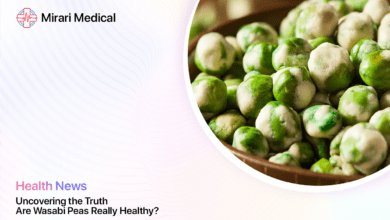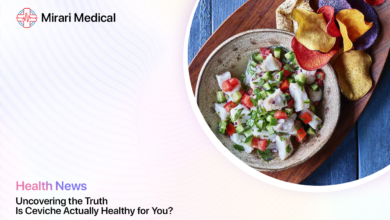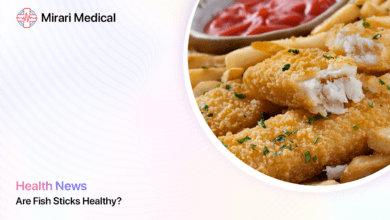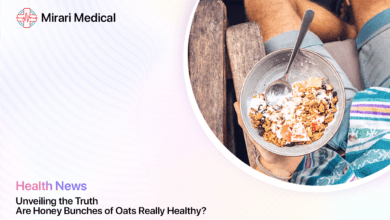Discover the Health Benefits of Lamb Meat: Is It a Healthy Option?

You may be interested
Did you know that lamb is one of the oldest domesticated meat species, entering the human diet around 9,000 years ago in the Middle East?[14] Today, this flavorful red meat is enjoyed around the world. But you may wonder, is lamb a healthy choice? Let’s explore the nutritional profile and potential health benefits of incorporating lamb meat into your diet.
What is Lamb Meat?
Lamb refers to the meat from a young domestic sheep, typically less than one year old. Once a sheep reaches one year of age, its meat is classified as mutton, which has a stronger flavor and tougher texture compared to the tender, milder taste of lamb.[14]
There are five main cuts of lamb commonly found in grocery stores:[14]
- Shoulder
- Rack
- Shank/breast
- Loin
- Leg
Each cut varies in flavor, tenderness, and fat content, offering diverse options for cooking.
Is Lamb Meat a Healthy Option?
What Are the Nutritional Benefits of Lamb Meat?
Lamb is an excellent source of several essential nutrients that support overall health and well-being. A 3-ounce (85 grams) serving of cooked lamb provides:[6]
- 25.6 grams of high-quality protein
- 7.8 grams of fat
- 1.2 grams of saturated fat
- 3.05 grams of monounsaturated fat
- 0.24 grams of polyunsaturated fat
- 0 grams of carbohydrates
- 258 calories
In addition to protein and healthy fats, lamb is a rich source of several vitamins and minerals, including:[6][10]
- Vitamin B12: 2.7 mcg (112% DV)
- Niacin: 6.2 mg (39% DV)
- Zinc: 4.9 mg (45% DV)
- Selenium: 23.8 mcg (43% DV)
- Phosphorus: 194 mg (28% DV)
- Iron: 1.6 mg (20% DV)
- Potassium: 271 mg (8% DV)
- Magnesium: 22 mg (6% DV)
These nutrients play crucial roles in various bodily functions, such as red blood cell formation, immune function, muscle growth and repair, and heart health.[6][10]
Is Lamb Meat High in Fat?
While lamb does contain fat, the amount and type of fat can vary depending on the cut and how much is trimmed away before cooking. On average, a 3-ounce serving of cooked lamb contains 7.8 grams of total fat, with 3.53 grams coming from saturated fat.[1]
Compared to other red meats like beef and pork, lamb tends to have slightly higher levels of saturated fat. However, it’s important to note that not all saturated fats are created equal. Lamb contains a type of saturated fat called stearic acid, which has a neutral effect on blood cholesterol levels.[7]
Additionally, around 40% of the fat in lamb is a monounsaturated fat called oleic acid, the same heart-healthy fat found in olive oil. Monounsaturated fats can help reduce “bad” LDL cholesterol levels and lower risk of heart disease.[1][7]
Lamb also contains small amounts of polyunsaturated fats, including omega-3 fatty acids. Grass-fed lamb tends to have higher levels of omega-3s compared to grain-fed, which can help reduce inflammation in the body.[1][2]
Is Lamb Meat a Good Source of Protein?
Yes, lamb is an excellent source of high-quality protein, providing all nine essential amino acids needed for muscle growth, repair, and maintenance. A 3-ounce serving of cooked lamb contains about 25.6 grams of protein, making it a great option for athletes, bodybuilders, and those looking to maintain or build lean muscle mass.[6]
The protein content of lamb is comparable to other meats like beef and pork. However, lamb may have a slight edge due to its higher levels of certain amino acids, such as beta-alanine and carnosine, which play important roles in muscle function and exercise performance.[8]
What Are the Health Benefits of Lamb Meat?
1. Rich in Essential Nutrients
As mentioned earlier, lamb is a rich source of several vitamins and minerals that are essential for optimal health. Some of the key nutrients found in lamb and their benefits include:
- Vitamin B12: Crucial for red blood cell formation, neurological function, and DNA synthesis. Lamb is one of the best dietary sources of B12.[6]
- Zinc: Supports immune function, wound healing, and growth and development in children. Lamb provides a significant amount of zinc per serving.[1]
- Iron: Necessary for oxygen transport in the body and preventing anemia. Lamb contains heme iron, which is more bioavailable than non-heme iron found in plant foods.[1]
- Selenium: An important antioxidant that helps protect cells from oxidative damage and supports thyroid function. Lamb is a good source of selenium.[6]
By incorporating lamb into a balanced diet, you can help ensure adequate intake of these essential nutrients for overall health and well-being.
2. Supports Muscle Growth and Repair
Lamb is an excellent source of high-quality protein, which is essential for building and repairing muscle tissue. Consuming adequate protein is especially important for athletes, bodybuilders, and those engaging in regular strength training to support muscle growth and recovery.[6]
In addition to protein, lamb contains specific amino acids that may offer unique benefits for muscle health:
- Beta-alanine: A non-essential amino acid that combines with histidine to form carnosine in muscle tissue. Higher levels of carnosine have been linked to improved exercise performance and reduced muscle fatigue.[8]
- Carnosine: A dipeptide molecule that acts as an antioxidant and helps buffer lactic acid in muscles during intense exercise. Higher carnosine levels may enhance athletic performance and delay fatigue.[8]
While more research is needed to fully understand the specific effects of these compounds in lamb, their presence suggests that lamb may offer some unique advantages for supporting muscle health and function.
3. Boosts Immune System
Lamb contains several nutrients that play key roles in supporting a healthy immune system:
- Zinc: Helps develop and activate T-cells, a type of white blood cell that fights off infected or cancerous cells. Adequate zinc intake is crucial for maintaining a strong immune defense.[1]
- Selenium: Supports the production of cytokines, signaling proteins that regulate immune response and stimulate the production of disease-fighting antibodies.[6]
- Iron: Necessary for the normal development and function of certain immune cells, including neutrophils and natural killer cells. Iron deficiency can impair immune function and increase susceptibility to infections.[1]
- Vitamin B12: Plays a role in white blood cell production and activity. Low B12 levels have been associated with decreased immune response and higher risk of certain autoimmune disorders.[6]
By providing these essential immune-boosting nutrients, regular consumption of lamb as part of a balanced diet may help support the body’s natural defense system and keep you healthy.
4. Good for Heart Health
Despite being a red meat, lamb can be incorporated into a heart-healthy diet when consumed in moderation and prepared using healthy cooking methods. Here’s how lamb may support heart health:
- Monounsaturated fats: Around 40% of the fat in lamb is oleic acid, a type of monounsaturated fat that has been shown to lower “bad” LDL cholesterol levels and reduce risk of heart disease.[1][7]
- Omega-3 fatty acids: Grass-fed lamb contains higher levels of omega-3s compared to grain-fed, which can help reduce inflammation in the body and lower risk factors for heart disease.[1][2]
- Conjugated linoleic acid (CLA): Lamb is one of the best dietary sources of CLA, a type of fat that has been linked to reduced body fat, improved heart health markers, and lower inflammation.[2][13]
- Nutrient density: Lamb provides a wide array of vitamins and minerals that support heart health, such as magnesium, potassium, and B vitamins. These nutrients help regulate blood pressure, reduce inflammation, and keep the cardiovascular system functioning properly.[10]
It’s important to choose lean cuts of lamb, trim visible fat before cooking, and use heart-healthy preparation methods like grilling, roasting, or broiling to maximize the potential benefits for heart health. As with any meat, moderation is key – aim to include a variety of protein sources in your diet, including plant-based options.
5. Helps with Anemia
Anemia is a condition characterized by a lack of healthy red blood cells, leading to symptoms like fatigue, weakness, and shortness of breath. Iron deficiency is the most common cause of anemia worldwide.[6]
Lamb is an excellent source of heme iron, the most bioavailable form that is easily absorbed by the body. In fact, the iron in lamb is more readily absorbed than non-heme iron found in plant foods like spinach or beans.[1]
A 3-ounce serving of cooked lamb provides about 1.6 mg of iron, which is 20% of the daily value for adult women and 9% for adult men. For those following a vegetarian or vegan diet, lamb can be an especially valuable source of this essential mineral.[6]
In addition to iron, lamb contains several other nutrients that support healthy red blood cell production and function:
- Vitamin B12: Required for the maturation of red blood cells in the bone marrow. B12 deficiency can cause a type of anemia called megaloblastic anemia.[6]
- Folate: Works together with vitamin B12 to produce healthy red blood cells and prevent megaloblastic anemia. While lamb is not a significant source of folate, it can help enhance the absorption of this nutrient from other foods.[6]
- Copper: Plays a role in iron metabolism and is necessary for the formation of hemoglobin, the protein in red blood cells that carries oxygen. Lamb provides small amounts of copper to support this process.[6]
For those with anemia or at risk of developing it, incorporating lamb into a balanced diet along with other iron-rich foods may help improve red blood cell counts and alleviate symptoms. As always, consult with a healthcare professional for personalized guidance on managing anemia through diet.
Is Lamb Meat Safe for Everyone to Eat?
While lamb can be a nutritious addition to a balanced diet for most people, there are some factors to consider regarding its safety and suitability for certain individuals.
1. Lamb Meat and Cholesterol Levels
One potential concern with eating lamb is its fat content, particularly saturated fat, and the impact on blood cholesterol levels. A 3-ounce serving of cooked lamb contains about 7.8 grams of total fat, with 3.53 grams coming from saturated fat.[1]
Consuming too much saturated fat has been linked to increased levels of “bad” LDL cholesterol in the blood, which can raise risk of heart disease. However, the relationship between saturated fat intake and heart health is complex and may depend on the specific type of fat and overall dietary pattern.[7]
Some research suggests that the saturated fat in lamb, particularly stearic acid, may have a neutral effect on cholesterol levels compared to other types of saturated fat. Additionally, lamb contains a significant amount of monounsaturated fat, which can help lower LDL cholesterol when used in place of saturated fat.[7]
For those with high cholesterol or a history of heart disease, it’s important to discuss lamb consumption with a healthcare provider and monitor blood cholesterol levels regularly. Choosing lean cuts, trimming visible fat, and limiting portion sizes can help reduce saturated fat intake while still enjoying the potential benefits of lamb.
2. Lamb Meat and Sodium Intake
Another consideration with lamb is its sodium content. While lamb itself is relatively low in sodium, some cuts and prepared products may be higher due to added salt or processing methods.
Consuming too much sodium can raise blood pressure and increase risk of heart disease and stroke, especially in salt-sensitive individuals. The American Heart Association recommends limiting sodium intake to no more than 2,300 mg per day for most adults, with an ideal limit of 1,500 mg per day for those with high blood pressure.[15]
To minimize sodium intake when eating lamb, choose fresh cuts over processed products like cured or smoked lamb, and use herbs and spices instead of salt to flavor the meat. Reading nutrition labels can also help identify products with lower sodium content.
If you have high blood pressure or are at risk for heart disease, talk to your doctor or a registered dietitian about how to incorporate lamb into a low-sodium diet plan.
3. Lamb Meat and Allergies
While meat allergies are relatively rare, some people may experience an allergic reaction to lamb or other red meats. Symptoms can range from mild (hives, itching, digestive issues) to severe (anaphylaxis).[16]
One type of meat allergy, known as alpha-gal syndrome (AGS), is caused by an immune response to a sugar molecule called galactose-α-1,3-galactose found in mammalian meats like lamb, beef, and pork. AGS is often triggered by a tick bite and can cause delayed allergic reactions several hours after eating meat.[16]
If you suspect a lamb or meat allergy, it’s important to consult with an allergist for proper diagnosis and management. Avoiding the triggering food is the primary treatment for food allergies, so those with a confirmed lamb allergy will need to eliminate it from their diet.
In rare cases, some people may also experience an intolerance or sensitivity to lamb without a true allergy. Symptoms may include digestive issues like bloating, gas, or diarrhea. If you consistently feel unwell after eating lamb, try eliminating it from your diet for a few weeks and reintroducing it to see if symptoms return. Keeping a food diary can help identify potential triggers.
How to Incorporate Lamb Meat into a Healthy Diet?
When included as part of a balanced diet, lamb can provide a range of essential nutrients and potential health benefits. Here are some tips for incorporating lamb into a healthy eating pattern:
1. Choose Lean Cuts
Select lean cuts of lamb to minimize saturated fat intake and promote heart health. Some of the leanest options include:[17]
- Loin chop
- Leg
- Shank
- Arm chop
When possible, trim visible fat from the meat before cooking to further reduce fat content.
2. Pair with Healthy Side Dishes
Balance your plate by pairing lamb with nutrient-dense side dishes like:
- Roasted or grilled vegetables
- Leafy green salads
- Whole grains (quinoa, brown rice, bulgur)
- Legumes (lentils, chickpeas, beans)
These plant-based foods provide additional vitamins, minerals, fiber, and antioxidants to support overall health.
3. Limit Intake and Variety
While lamb can be a nutritious choice, it’s important to consume it in moderation as part of a varied diet. The American Institute for Cancer Research recommends limiting red meat intake to no more than 12-18 ounces (cooked weight) per week to reduce cancer risk.[18]
Aim to include a variety of protein sources in your diet, such as:
- Poultry
- Fish and seafood
- Eggs
- Legumes
- Nuts and seeds
- Dairy products
This variety helps ensure a balance of nutrients and may lower risk of certain chronic diseases associated with high red meat consumption.
Conclusion
Lamb meat can be a flavorful and nutritious addition to a balanced diet when consumed in moderation. As a rich source of high-quality protein, vitamins, and minerals, lamb offers several potential health benefits, including supporting muscle growth and repair, boosting immune function, and promoting heart health.
However, it’s important to consider individual factors such as saturated fat intake, sodium content, and potential allergies when deciding whether to include lamb in your diet. Choosing lean cuts, pairing with nutrient-dense side dishes, and limiting overall red meat intake can help maximize the benefits of eating lamb.
As with any dietary change, it’s always best to consult with a healthcare professional or registered dietitian for personalized guidance on how to incorporate lamb into a healthy eating pattern that meets your unique needs and goals.
Key Takeaways
- Lamb is a rich source of high-quality protein, vitamins (B12, niacin), and minerals (zinc, selenium, iron).
- Potential health benefits of eating lamb include supporting muscle growth and repair, boosting immune function, and promoting heart health.
- Choose lean cuts and trim visible fat to minimize saturated fat intake.
- Pair lamb with nutrient-dense side dishes like vegetables, whole grains, and legumes.
- Limit red meat intake to no more than 12-18 ounces (cooked weight) per week and include a variety of protein sources in your diet.
- Consult with a healthcare professional for personalized guidance on incorporating lamb into a healthy eating pattern.
FAQs
Is lamb healthier than beef?
Lamb and beef have similar nutrient profiles, but lamb tends to be slightly higher in some vitamins and minerals like vitamin B12, niacin, and zinc. However, lamb is also higher in saturated fat compared to lean cuts of beef. Both can be included in a healthy diet when consumed in moderation.
Can eating lamb help with weight loss?
Lamb is a good source of protein, which can help support weight loss by promoting feelings of fullness and preserving lean muscle mass. However, it’s also relatively high in calories and fat, so portion control is important. Choosing lean cuts and pairing with nutrient-dense, lower-calorie foods can help support weight loss goals.
Is grass-fed lamb more nutritious than grain-fed?
Grass-fed lamb tends to have a more favorable fat profile compared to grain-fed, with higher levels of omega-3 fatty acids and conjugated linoleic acid (CLA). However, the overall nutrient content is similar between the two. Choosing grass-fed lamb may offer some additional health benefits, but both can be part of a balanced diet.
How often should I eat lamb?
The American Institute for Cancer Research recommends limiting red meat intake, including lamb, to no more than 12-18 ounces (cooked weight) per week to reduce cancer risk. Aiming for 1-2 servings of 3 ounces (cooked weight) each per week can allow you to enjoy the potential benefits of lamb while keeping overall intake moderate.
What are some healthy ways to cook lamb?
Some of the healthiest cooking methods for lamb include grilling, broiling, roasting, and stir-frying. These methods allow excess fat to drain away and don’t require added oils or fats. Avoid deep-frying or adding heavy sauces or gravies to keep the dish lower in calories and saturated fat. Use herbs, spices, and acidic ingredients like lemon juice or vinegar to add flavor without extra sodium.
References
- https://www.healthline.com/nutrition/lamb-nutrition
- https://www.medicalnewstoday.com/articles/326950
- https://www.healthline.com/health/food-nutrition/lamb-vs-beef
- https://www.bbcgoodfood.com/howto/guide/lamb-guide
- https://www.webmd.com/diet/lamb-nutrition-facts
- https://fdc.nal.usda.gov/fdc-app.html#/food-details/174201/nutrients
- https://www.hsph.harvard.edu/nutritionsource/2016/12/19/saturated-fat-regardless-of-type-found-linked-with-increased-heart-disease-risk/
- https://pubmed.ncbi.nlm.nih.gov/20071342/
- https://pubmed.ncbi.nlm.nih.gov/26950145/
- https://www.ncbi.nlm.nih.gov/books/NBK507973/
- https://pubmed.ncbi.nlm.nih.gov/22063594/
- https://pubmed.ncbi.nlm.nih.gov/22210577/
- https://pubmed.ncbi.nlm.nih.gov/20219103/
- https://www.todaysdietitian.com/newarchives/0917p44.shtml
- https://www.heart.org/en/healthy-living/healthy-eating/eat-smart/sodium/how-much-sodium-should-i-eat-per-day
- https://www.aaaai.org/tools-for-the-public/conditions-library/allergies/meat-allergy
- https://ask.usda.gov/s/article/What-are-the-leanest-cuts-of-lamb
- https://www.aicr.org/cancer-prevention/food-facts/meat-poultry-fish/lamb-veal-and-game-meat/
Your trusted source for health info, offering expert advice, news, and tips to stay healthy and informed.




